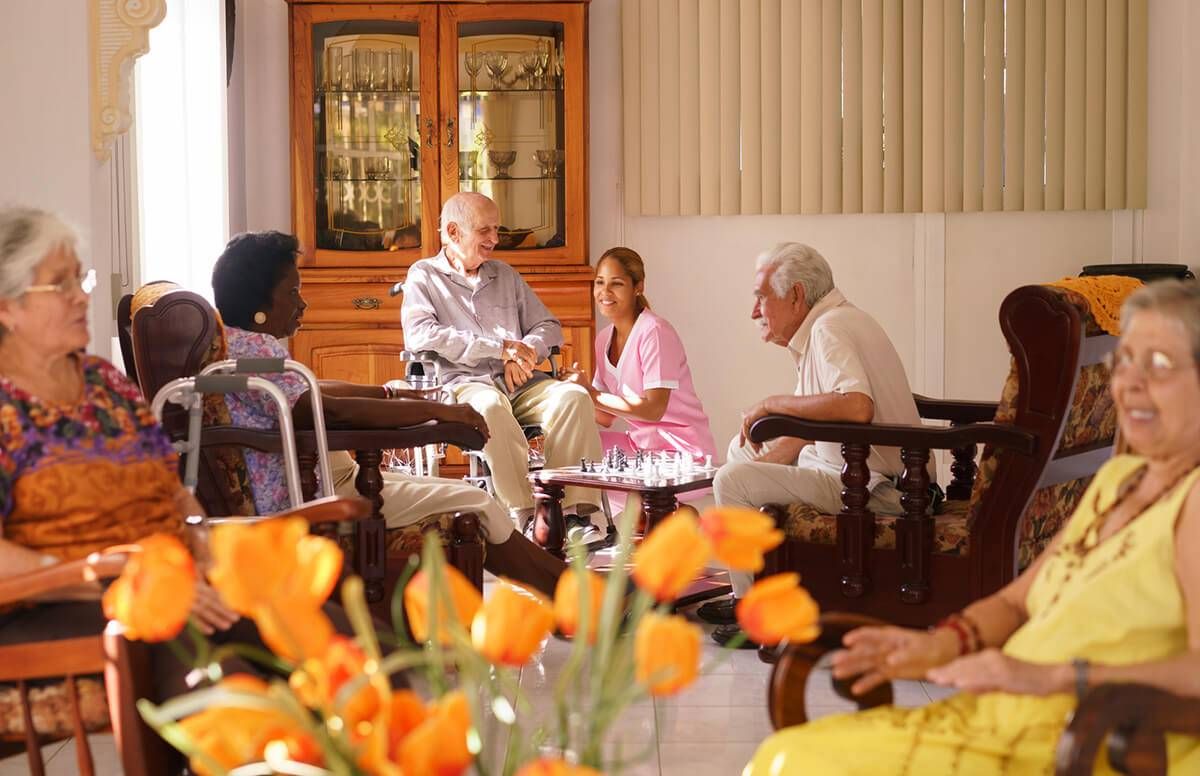The Perils of Too Much Relaxation in Assisted Living
The sedentary nature of such environments can be a threat to residents' health
(This article was provided by the The Op-Ed Project.)

You wake up and someone makes you breakfast. You attend a lecture, eat lunch and enjoy a book club meeting, then eat dinner with friends, and finish the night with a movie before heading to bed. While this lifestyle sounds convenient and relaxing, it may be what is killing older adults in assisted living communities.
The Good and the Bad of Assisted Living
More than 735,000 older adults nationwide live in assisted living communities. These communities promote a hassle-free and accessible living environment. Elevators replace stairs. Ramps replace curbs. All housekeeping and meals are provided.
While there is no doubt that accessibility is important, finding the right balance of assistance and challenge is the key to maximize the person-environment fit. But unfortunately, the philosophy of the assisted living community towards environmental challenges may restrict the ability to complete these important daily living tasks.
As a physical therapist and public health researcher, I work with individuals residing in assisted living. Recently, one of my patients noted, “They don’t want me walking the stairs by myself — something could happen.”
An 81-year-old woman, my patient had moved to the facility due to slight memory impairments and the convenience of not having to maintain a house. She was able to walk up and down six flights of stairs independently, but was prevented from performing this task by the assisted living community.
'Recipe for Declining Function'
Marketing materials for one assisted living community advertise, “With things taken care of, you now have an opportunity to slow down; the only requirement is sitting in a chair.” The old adage of “use it or lose it” makes this perspective a recipe for declining function, worsening health and potentially death.
During this holiday season, millions of families in this country may be starting and continuing conversations about the health and living arrangements of older relatives. Many will debate a move to a more supportive living environment.
Certainly the decision for a loved one to move out of his or her home is understandably challenging, but made with the best of intentions. It is meant to provide greater assistance with activities of daily living.
Challenges Are Good for Us
While few would deny that providing needed care is ethical, transitions to assisted living communities may accelerate physical function declines in older adults. That is because the environment is over-supportive and restricts the daily challenges needed to maintain health.
The theory of person-environment fit suggests a certain amount of environmental challenge is needed to maintain and/or enhance a person’s functional capacity. This concept is clear in exercise. In marathon training, progressively longer training runs provide a precise amount of challenge to condition the body to run 26.2 miles.
It is, unfortunately, much more challenging to determine the extent of environmental challenges that older adults should face. And this uncertainly often leads to removing challenges entirely.
The accessibility of an assisted living apartment removes all challenges, contributing to worse health outcomes. Assisted living apartments are small, so the amount of walking required to move about the apartment is minimal.
Assessing Daily Walking
Our research team at Northwestern University recently explored the daily walking of assisted living residents and found that they took, on average, 1,680 steps per day. This is significantly lower than the 10,000 steps per day recommendation for the general population and the 6,500-8,500 steps per day recommendation for individuals with disability or chronic illness.
The number of steps taken per day is critical, particularly for older adults, as greater amounts of step activity are associated with better memory, improved quality of life, increased cardiovascular function and decreased mortality.
Engaging in greater amounts of physical activity and daily living tasks would help to keep older adults as independent as possible. Lack of interest and low motivation cannot be solely blamed for the low rates of physical activity and exercise engagement among older adults.
Instead, environmental cultures that promote sedentary activities, restrict participation to ensure safety and encourage a view of retirement as rest and relaxation are harming the lives of older adults.
Keeping Up the Upkeep
Assisted living facilities can best support their residents by creating an environment that provides appropriate challenges. The inability to maintain one’s home often drives transitions from community living to assisted living. But that transition does not mean that older adults should completely retire from caring for their homes. Assisted living communities might better serve their residents by involving them in upkeep.
Certainly many older adults see the benefits of an assisted living environment in not having to do the tasks such as cleaning, laundry and cooking. But, perhaps, a view of retirement that promotes continued engagement in all tasks of life will facilitate independence, functioning and optimal aging.
Promoting Activity
Older adults represent 14.5 percent of the population. Rapid growth of the older adult population will make this group 21.7 percent of the population by 2040. The future population will need housing options that enable optimal functioning and aging.
For many in the coming weeks, talk about moving a parent or other relative to the next level of care begins. This requires all participants to look beyond the amenities, dining options and floor plans to choose assisted living cultures where the benefit of the community is not a place where everything is done for the residents, but rather, a place that promotes a physically active lifestyle.

